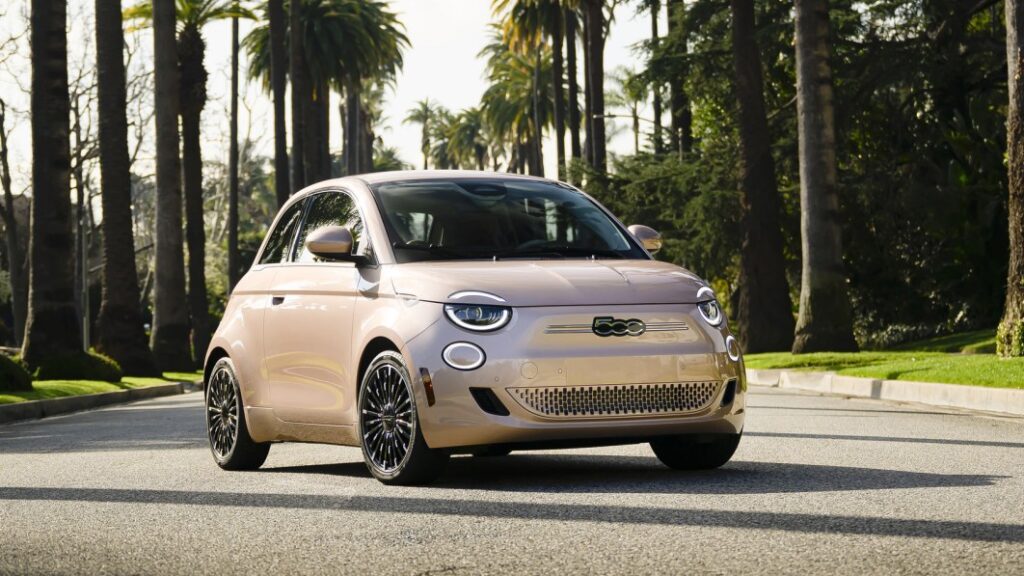Stellantis could turn the Fiat 500e into a gasser in Europe

How do you solve a problem like electrification? Sometimes the solution is to consider going back to internal combustion. Automotive News Europe, via Italian newspaper Il Corriere della Sera, reports that Stellantis has asked suppliers for quotes on increasing Fiat 500e production by 100,000 units annually, at the Mirafiori, Italy, plant that builds the electric mini car. The twist in the plot is that plant reps told ANE the additional production would be for an ICE-powered 500, not the battery-electric version.
See, Fiat has three challenges with the 500. The first is that 500e isn’t hitting the production marks the parent company sought, 90,000 units per year; sales the past two years have been in the 77,000-unit range. The second is that the ICE-powered 500, built in Tychy, Poland, and still the 17-year-old mini car that’s slightly smaller than the 500e, can only be sold in Europe until June; that 500 will fall afoul of the same cybersecurity regulations that are shuffling the Porsche Cayman, Boxster, and Macan off the European market. The third is national pride: Italy, and Mirafiori plant workers, want to maintain elevated production figures from the country’s only mass-market automaker, and no one’s sure the 500e will be able to do that.
Hence the exploration into the costs of alternatives. One idea — stress being on the fact that this is only an idea — is to re-engineer the electric-specific 500e platform to accept a mild-hybrid gas engine. The Mirafiori plant would still build the 500e, and it would add 100,000 units or so of a gas-powered 500. In Europe, the gasser 500 still does numbers. Transport industry JATO Dynamics said that including Abarth models, Fiat sold 108,943 units of the ICE-powered 500.
If Stellantis saw fit to spend the money, the rumored engine candidate is the 1.0-liter FireFly three-cylinder, used in the sister Panda mini car, making 69 horsepower in that application.
The cost-benefit calculations run up against at least a couple of walls, one being that if Stellantis went ahead with the plan, the resulting car wouldn’t hit the market until late 2025 at the earliest, perhaps two years, according to observers. Fiat also hasn’t stepped back from its stated goal of being an EV-only maker in Europe by 2030, leaving a new, gas-powered 500 only four years to pay for itself, at most. On the positive side, the 500e platform is apparently an evolution of that used for the now-dead Alfa Romeo Mito, designed before the merger that created Stellantis, ANE saying the 500e is built on same lines that used to build the ICE-powered Mito.
Stellantis didn’t deny the report, but wouldn’t comment on it. In the meantime, the automaker’s said to be extending Polish production of the current gas-powered 500 until the end of June to fill the dealer pipeline. After that, the gasser 500 will head to a Stellantis facility in Algeria, where it’s to be built for sale in the Middle East and Africa, and Stellantis has another choice to make about what to do in Europe.



